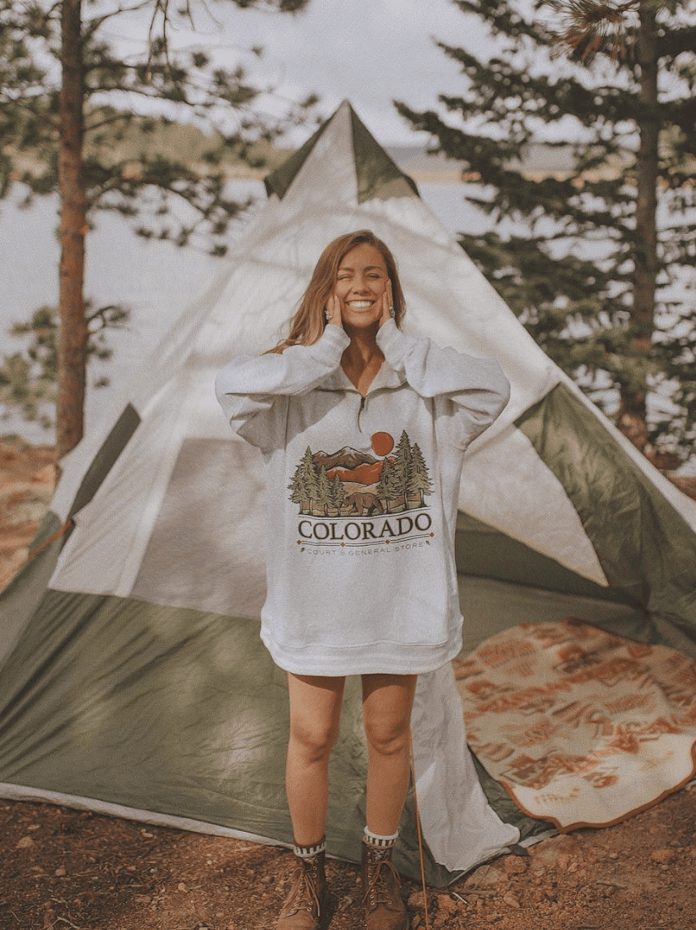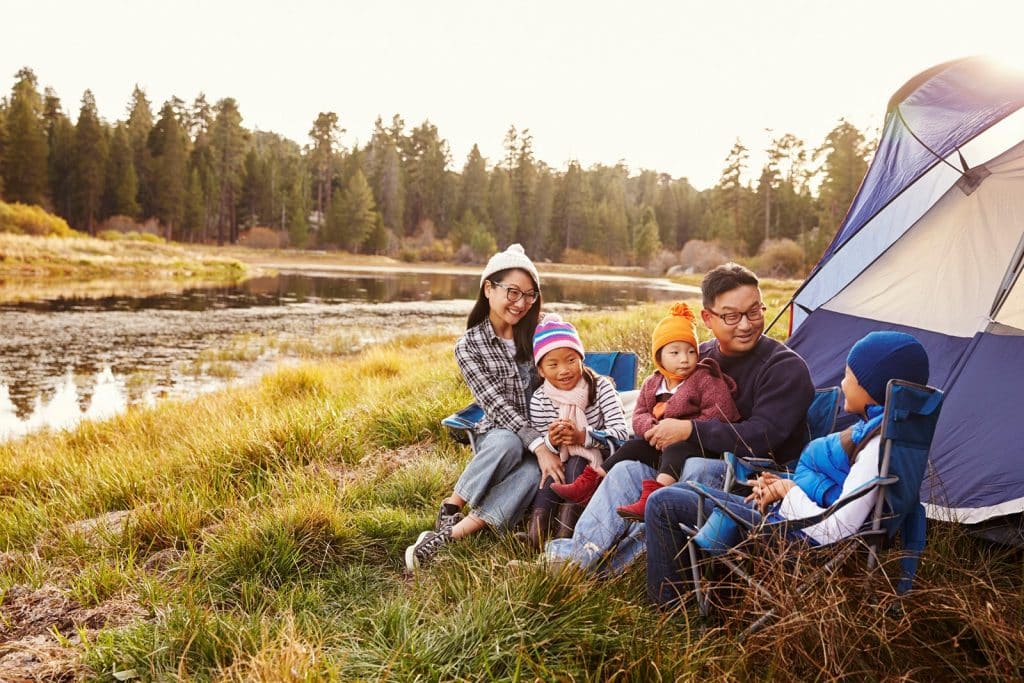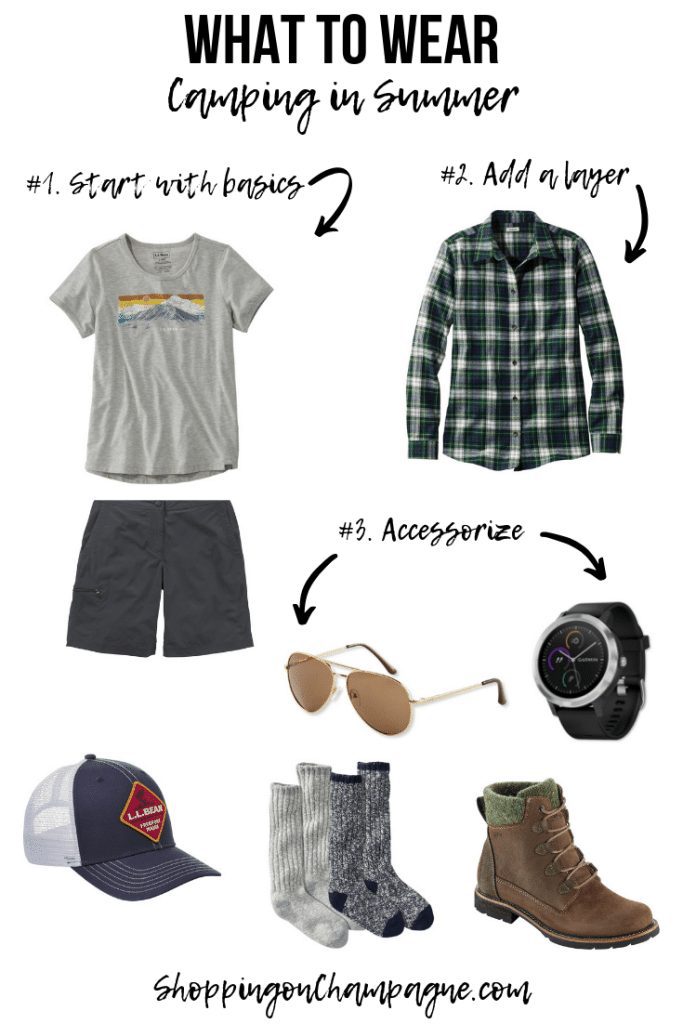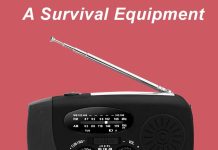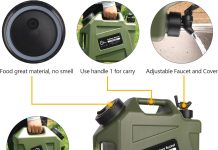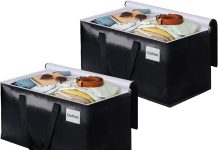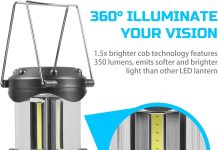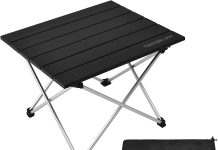Are you heading out on a camping trip? Wondering how to dress for the great outdoors? Look no further! This article will give you some friendly tips and tricks for dressing comfortably and stylishly during your camping adventures.
Whether you’re a seasoned camper or a newbie to the wilderness, we’ve got you covered.
So, grab your hiking boots and favorite flannel shirt because we’re about to embark on a fashion-forward journey into the world of camping attire. Let’s get started!
Choosing the Right Clothing for Camping
Camping is a great way to connect with nature, unwind, and break from the fast-paced world. However, to truly enjoy your camping experience, choosing the proper clothing to keep you comfortable and protected from the elements is essential. Whether you’re a seasoned camper or a beginner, here are some tips on how to dress for camping.
Consider the Weather and Climate
Before packing your camping wardrobe, consider the weather and climate of the area you’ll be camping in. Will it be hot and dry? Cold and snowy? Knowing the weather conditions will help you choose the appropriate clothing items to stay comfortable. Check the weather forecast for your camping destination and pack accordingly.
Dress in Layers
One critical principle of camping dressing is to layer your clothing. Layering allows you to easily adjust your attire based on fluctuating temperatures throughout the day. Start with a moisture-wicking base layer that will keep you dry and comfortable by wicking away sweat. Add a mid-layer for insulation and warmth, and finish with an outer and windproof layer.
Choose Moisture-Wicking Fabrics
When it comes to camping, moisture-wicking fabrics are your best friend. These fabrics are designed to pull moisture away from your skin and onto the fabric’s surface, where it can evaporate. This helps to keep you dry and comfortable, even if you’re sweating or caught in a rain shower. Look for clothing made from materials such as polyester or merino wool, as these are known for their moisture-wicking properties.
Pack Extra Clothes
Accidents happen when you’re out in the wilderness, and it’s always a good idea to be prepared. Pack extra clothes in case your current attire gets wet or dirty. Having spare clothes on hand will ensure you always have something clean and dry to change into. It’s also important to remember to pack clothes for different weather conditions, especially if you’re camping for an extended period or during a changeable season.
Protect Yourself from Insects
Insects can be a nuisance when camping; in some cases, they can even carry diseases. To protect yourself from insect bites, it’s essential to dress appropriately. Choose lightweight and loose-fitting clothing that covers your arms and legs. Opt for long-sleeve shirts and pants rather than shorts and tank tops. Additionally, consider treating your clothing with insect repellent or wearing bug spray to keep the bugs at bay.
Footwear for Camping
Choosing the proper footwear for camping is essential to keep your feet comfortable and protected while exploring the great outdoors. Here are some tips to help you choose the best footwear for your camping adventures.
Wear Comfortable and Sturdy Shoes
When camping, you’ll likely spend a lot of time on your feet, so wearing comfortable and supportive shoes is essential. Choose shoes that have a cushioned insole and provide good arch support. Ensure they fit correctly and have enough room for your toes to move freely.
Opt for Hiking Boots in Rugged Terrain
Investing in good hiking boots is a wise choice for camping in rugged terrain or planning hiking. Hiking boots provide ankle support and offer better traction on uneven surfaces. Look for waterproof and breathable boots to keep your feet dry and comfortable.
Consider Water-Resistant Footwear
If there’s a chance of encountering wet conditions or crossing streams during your camping trip, consider wearing water-resistant footwear. Water-resistant shoes or sandals are designed to repel water and dry quickly, which can be a game-changer for comfort and practicality.
Pack Extra Socks
Having dry and comfortable feet is crucial when camping, so pack enough socks for your trip. Opt for moisture-wicking socks that keep your feet dry and help prevent blisters. Consider packing a few extra pairs if you need to change them during your camping adventure.
Headwear for Camping
Protecting your head from the elements is essential when camping. Whether it’s shielding yourself from the sun’s harmful rays or keeping warm on chilly nights, here are some headwear options to consider for your camping wardrobe.
Wear a Hat to Protect Yourself from the Sun
Protecting your face and head from the sun’s harmful UV rays is crucial when spending time outdoors. Wearing a wide-brimmed hat or a baseball cap with a neck flap can shade your face, neck, and ears, reducing the risk of sunburn and heatstroke. Look for hats made from lightweight and breathable materials to ensure comfort.
Consider a Bandana or Buff
A bandana or buff is a versatile piece of headwear that can be used in various ways while camping. It can be worn as a headband to keep your hair out of your face, tied around your neck to protect against sunburn, or used as a makeshift mask to filter dust or smoke. It’s a small, lightweight accessory that can be useful in different situations.
Bring a Warm Beanie for Cold Nights
Even during the summer, nighttime temperatures can drop significantly, especially in higher elevations or near bodies of water. Packing a warm beanie or a knit hat can keep your head and ears cozy when the temperature dips. Look for hats made from insulating materials such as fleece or wool for maximum warmth.
Clothing Essentials for Camping
When it comes to camping, having the right clothing essentials can make all the difference in your comfort and enjoyment of the outdoors. Here are some clothing items that should be on your camping checklist.
Moisture-Wicking T-shirts
Moisture-wicking t-shirts are a must-have for any camping trip. These shirts are designed to pull sweat away from your body, keeping you dry and comfortable even during active or high-intensity activities. Look for t-shirts made from lightweight and breathable fabrics like polyester or merino wool.
Long-Sleeve Shirts for Sun Protection
Protecting your skin from the sun’s harmful UV rays is crucial outdoors. Long-sleeve shirts from lightweight and UPF-rated fabrics offer extra sun protection without compromising breathability. Opt for shirts with built-in ventilation or roll-up sleeves for added versatility.
Versatile Pants or Shorts
Choosing the right bottoms for camping depends on the weather and activities you’ll participate in. For warmer weather, lightweight and quick-drying shorts are ideal. Look for shorts with multiple pockets for convenience. For cooler weather or hiking through dense vegetation, opt for lightweight, breathable pants that protect against bugs, thorns, and other elements.
Insulating Layers for Cold Weather
Bringing insulating layers is essential to keep warm when camping in colder temperatures. Thermal or fleece-lined leggings and a matching top can provide extra warmth under your clothing. Pack a down or synthetic insulated jacket to keep you cozy when the temperature drops.
Rain Gear
Rain showers can happen unexpectedly, so it’s crucial to be prepared with proper rain gear. Invest in a waterproof and breathable rain jacket and rain pants to keep you dry during wet weather. Look for lightweight and packable gear so your backpack won’t take up too much space.
Swimsuit
If your camping trip includes any water activities or swimming in lakes or rivers, don’t forget to pack a swimsuit. A swimsuit made from quick-drying material is ideal, as it will dry faster and won’t weigh you down.
Pajamas or Sleepwear
Comfortable sleepwear is essential for a restful night’s sleep in the great outdoors. Pack lightweight and breathable pajamas or sleepwear suitable for the temperature range you’ll be camping in. Opt for moisture-wicking fabrics that help regulate your body temperature and keep you comfortable throughout the night.
Choosing the Right Underwear
Choosing the right underwear for camping may not seem like a significant consideration, but wearing the wrong type of underwear can lead to discomfort and irritation. Here are some tips to help you choose the right underwear for your camping trip.
Opt for Moisture-Wicking and Breathable Fabrics
When it comes to underwear for camping, moisture-wicking and breathable fabrics are essential. Look for underwear made from polyester or nylon, as they are known to wick away sweat and moisture from your skin, keeping you dry and comfortable.
Consider Synthetic or Merino Wool Materials
Synthetic materials like polyester or nylon are famous for camping underwear due to their moisture-wicking properties. They dry quickly and are lightweight, making them ideal for active camping trips. Alternatively, merino wool underwear is a natural and sustainable option, providing excellent moisture-wicking capabilities and odor resistance.
Pack Enough Pairs for the Duration of the Trip
When packing underwear for camping, it’s best to be prepared. Pack enough pairs to last for your trip, including a few extra pairs in case of emergencies or unexpected mishaps. It’s always better to have more than not enough, especially when access to laundry facilities may be limited.
Accessories for Camping
In addition to clothing, certain accessories can enhance your camping experience and protect you from the elements. Here are some camping accessories to consider packing for your trip.
Sunglasses
Protecting your eyes from harmful UV rays is essential when spending time outdoors. Invest in a good pair of sunglasses with UV protection to shield your eyes from the sun’s rays and reduce the risk of eye damage. Look for sunglasses with polarized lenses to reduce glare and enhance your vision.
Sunscreen
Sunscreen is a crucial accessory to protect your skin from the sun’s harmful UV rays. Choose a broad-spectrum sunscreen with a high SPF rating and apply it generously to exposed skin. Remember to reapply regularly, especially after swimming or sweating.
Insect Repellent
Insects can damper your camping experience, but you can keep the bugs at bay with the right insect repellent. Look for insect repellents that contain DEET or Picaridin, as these ingredients are effective against mosquitoes and other biting insects. Apply the repellent to exposed skin and clothing according to the product instructions.
Gloves and Scarf for Cold Weather
If you’re camping in colder temperatures, don’t forget to pack gloves and a scarf to keep your hands and neck warm. Look for gloves made from insulating materials such as fleece or wool, and choose a scarf that provides adequate coverage and can be easily layered for added warmth.
Camping in Different Seasons
Camping can be enjoyed year-round, regardless of the season. However, different seasons require different clothing considerations. Here are some tips on how to dress for camping in each season.
Summer Camping
In summer, temperatures can be scorching during the day and cooler at night. When camping in summer, it’s essential to dress in lightweight and breathable clothing that provides sun protection. Opt for moisture-wicking t-shirts, shorts, and a wide-brimmed hat for sun protection. Pack a lightweight long-sleeve shirt and pants for evenings when temperatures cool down. Don’t forget to apply sunscreen regularly and bring insect repellent to ward off mosquitoes and other bugs.
Spring and Fall Camping
Spring and fall offer moderate temperatures, but they can also be unpredictable. Layering is critical during these seasons, as temperatures fluctuate throughout the day. Bring a combination of short-sleeve and long-sleeve shirts, lightweight pants, and a mix of insulating layers for cooler evenings. Be prepared for rain by packing a waterproof jacket and pants. Checking the weather forecast and packing for your destination is a good idea.
Winter Camping
Winter camping requires extra preparation to stay warm and protected. Temperature control is crucial, so dress in layers to trap heat and stay comfortable. Start with a moisture-wicking base layer, followed by insulating layers such as thermals, fleece, or down jackets. Waterproof outer layers such as a parka or snow pants will protect you from wind, snow, and rain. Don’t forget to wear warm hats, gloves, and thermal socks to keep your extremities cozy. It’s essential to have the right gear and clothing when camping in winter to prevent hypothermia and frostbite.
Special Considerations for Backpacking
If you’re planning a backpacking trip, the weight and space of your clothing become critical factors to consider. Here are some special considerations for choosing clothing when backpacking.
Choose Lightweight and Quick-Drying Clothing
When backpacking, every ounce counts, so opt for lightweight clothing that won’t weigh you down. Look for garments made from lightweight materials such as nylon or polyester. These materials are lightweight and quick-drying, which is crucial if you encounter rain or need to wash your clothes on the go.
Pack Multi-Purpose Items
When backpacking, space is limited, so think about packing items that can serve multiple purposes. For example, packing convertible pants that can be zipped off into shorts or a buff that can be worn as a hat, headband, or neck gaiter can save space in your backpack. Consider the versatility of each item before adding it to your backpacking checklist.
Consider the Weight and Space of Your Clothing
Before packing your backpack, lay out all your clothing items and evaluate each in terms of weight and space. Be selective with each piece and consider its usefulness and versatility. Minimizing the number of items you bring will reduce the weight on your back and create more space for other essential items.
Campsite Hygiene and Comfort
Maintaining hygiene and personal comfort can significantly impact the enjoyment of your camping trip. Don’t overlook these aspects when planning what clothing to bring.
Bringing Clean and Dry Clothes to Change
Keeping your clothing clean and dry is essential for maintaining hygiene and comfort during camping. Pack enough clean clothes to change into throughout your trip. Bring sealable plastic bags to separate dirty clothes from clean ones and store any wet or muddy clothes to avoid cross-contamination.
Avoid Cotton and Choose Quick-Drying Fabrics
Cotton clothing is comfortable, but it absorbs moisture and dries slowly, leading to discomfort and making you feel cold. Instead, choose quick-drying fabrics such as nylon or polyester. These materials wick away moisture from your body and dry quickly, keeping you dry and comfortable.
Consider a Camp Shower
Maintaining personal hygiene while camping is essential for comfort and health. If you can access water at your campsite, consider bringing a camp shower or portable shower system. This will allow you to regularly clean yourself and your clothing, ensuring you stay fresh and hygienic throughout your camping adventure.
Using Layers for Temperature Regulation
Using layers is a valuable technique for temperature regulation in any outdoor activity, and camping is no exception. Here’s how to utilize layers effectively for optimal comfort.
Base Layer
The base layer is the layer of clothing closest to your skin. It should be made of moisture-wicking material to keep you dry and comfortable by pulling sweat away from your body. Opt for long-sleeve shirts and pants made from lightweight and breathable fabrics.
Mid Layer
The mid-layer provides insulation and helps trap heat close to your body. This layer can consist of fleece jackets or sweaters that provide warmth without adding too much bulk. Fleece is an excellent choice for its insulating properties and ability to retain warmth even when damp.
Outer Layer
The outer layer protects against elements, such as wind and rain. Choose a waterproof and windproof jacket and pants that will keep you dry and shield you from harsh weather conditions. Look for outer layers with adjustable features, such as hoods and cuffs, to customize the fit for maximum protection.
In conclusion, dressing appropriately for camping is vital to ensure comfort, protection, and enjoyment of the great outdoors. Consider the weather and climate of your camping destination, dress in layers, choose moisture-wicking fabrics, and pack extra clothes for emergencies. Don’t forget to protect yourself from insects and choose suitable footwear for the terrain.
Pay attention to headwear, underwear, and accessories that enhance your camping experience. Adapt your clothing choices based on the season and special considerations for backpacking.
Prioritize campsite hygiene and personal comfort by bringing clean, quick-drying clothes and utilizing layering techniques for optimal temperature regulation. These tips will prepare you to dress for camping and make the most of your outdoor adventure. Happy camping!

